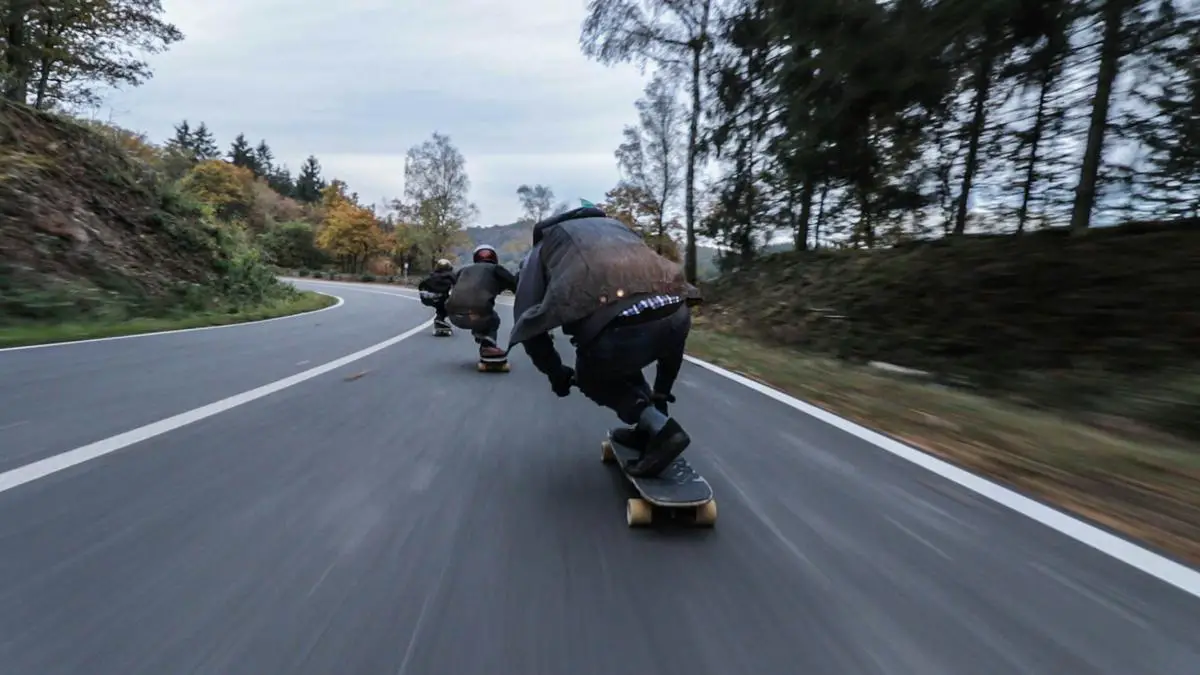Electric skateboards, with their blend of modern technology and classic thrills, have transformed the way we think about skateboarding. An integral part of this transformation is the braking system, an often overlooked but vital component that ensures safety and enhances control. This article delves into the various types of braking systems available in electric skateboards, shedding light on how each contributes to a safer and more enjoyable riding experience.
Types of Electric Skateboard Braking Systems
Electric Skateboards and Their Braking Systems: A Closer Look
Electric skateboards offer a modern twist on traditional skateboarding, providing electric power for propulsion. An essential aspect of these motorized boards is their braking system, crucial for rider safety and control. This post explores the different types of braking systems found in electric skateboards, highlighting how each operates to ensure a smooth ride.
The most common braking systems in electric skateboards include regenerative, dynamic, and mechanical braking. Each system has its unique workings, advantages, and situations where it performs best.
Regenerative Braking is perhaps the most highlighted feature of electric skateboards. This system captures the board’s kinetic energy during slowing or descending and converts it back into electrical energy, which is then stored in the skateboard’s battery. Not only does this feature extend the riding range by recharging the battery, but it also provides a smooth braking experience. However, its efficiency can vary based on the skateboard’s speed and the battery’s charge level.
Dynamic Braking, also known as electrical braking, works without directly recharging the battery. When engaged, it creates an electrical circuit that opposes the skateboard’s motion, thus slowing it down. While it doesn’t help in recharging the battery like regenerative braking, dynamic braking offers consistent performance regardless of the battery level, making it reliable at any point during a ride.
Mechanical Braking is less common in electric skateboards but exists in some models. This system is similar to traditional skateboards and bikes, where physical mechanisms like foot brakes or hand levers apply pressure to the wheels to reduce speed. Mechanical braking is entirely manual and doesn’t depend on the skateboard’s electrical system, making it a good backup in situations where the electric braking systems fail or when precision stopping is needed.
Choosing an electric skateboard with the right braking system depends on personal preference, riding style, and where the skateboard will be used. For those looking for extended rides and efficient battery use, regenerative braking systems are ideal. Dynamic braking systems, on the other hand, offer consistency and reliability, making them suitable for riders who prioritize control. Meanwhile, mechanical braking adds an extra layer of security by providing a non-electrical means to stop.
Understanding the nuances of these braking systems can significantly enhance the electric skateboarding experience, offering riders not just the thrill of the ride but also the peace of mind that comes with being in control. Whether coasting down city streets or navigating through parks, the right braking system ensures every journey is both enjoyable and safe.

Regenerative Braking Explained
Understanding Regenerative Braking in Electric Skateboards
Electric skateboards, a modern twist on a classic mode of transport, have embraced technology in more ways than one, regenerative braking being a prime example. This system is more than just a means to slow down or stop; it’s a sophisticated process that also contributes to the skateboard’s efficiency and battery life.
At its core, regenerative braking converts the kinetic energy, which is the energy created by the skateboard’s movement, back into electrical energy. This occurs when the rider decides to slow down or stop. Instead of this kinetic energy being wasted as heat — as with traditional mechanical braking systems — it’s captured and reused.
Here’s a simplified breakdown of how it works: When the rider applies the brake, the electric motor that usually drives the skateboard forward switches roles. It becomes a generator. As the wheels turn, they spin the motor in reverse. This reverse action generates electricity, which is then fed back into the skateboard’s battery, partially recharging it.
The mechanism behind this involves the motor’s electromagnetic field. Braking initiates a process that reverses this field, which in turn, resists the motor’s rotation. It’s this resistance that slows the skateboard down. The beauty of this system lies in its dual-purpose action – decelerating the skateboard while simultaneously capturing valuable energy.
To facilitate regenerative braking, electric skateboards are equipped with sophisticated electronic control units (ECUs). These ECUs manage the flow of electricity between the motor and the battery. They ensure that the energy generated during braking is either stored in the battery or used immediately, depending on the battery’s state of charge and the energy requirements of the skateboard.
Despite its efficiency, it’s worth noting that regenerative braking cannot fully recharge an electric skateboard’s battery. The amount of energy recovered depends on several factors, including the skateboard’s speed at the time of braking and the duration of the braking action.
Moreover, while regenerative braking adds to a skateboard’s energy efficiency, it’s not a standalone solution. It works best in conjunction with the electric skateboard’s entire braking system, offering a blend of safety, control, and energy recovery.
Choosing an electric skateboard with regenerative braking is a smart decision for those looking to maximize their ride’s efficiency and battery life. It represents a step forward in the sustainable evolution of electric transportation, ensuring riders get more out of every charge while contributing to a more eco-friendly mode of transport.

Safety and Efficiency Considerations
Understanding the Performance and Safety of Braking Systems in Electric Skateboards
In the world of electric skateboards, where speed meets innovation, the role of a braking system is fundamental for both the safety and efficiency of the rider’s experience. It’s not just about coming to a halt but doing so in a way that’s reliable, controlled, and responsive to the rider’s needs. The braking system is a linchpin in the entire operational mechanism of an electric skateboard, and its importance cannot be overstated.
Before diving into the nuances that make a braking system both safe and efficient, it’s essential to grasp the basics. An electric skateboard typically integrates a motorized setup that necessitates a more complex braking system than what’s found in traditional skateboards. This complexity is due to the need to manage higher speeds and the electronic interface that commands the board’s movements, including deceleration.
At the heart of this discussion is the mechanism of action that a braking system employs to ensure the rider’s safety without compromising on performance. A key aspect is the system’s ability to provide immediate feedback to the rider. This means that upon engaging the brake, the system must promptly respond, reducing speed in a predictable and smooth manner. Such predictability prevents mishaps and accidents that can occur if the board stops too abruptly or not quickly enough.
Another crucial factor is the modulation of the braking system. This refers to the rider’s ability to adjust the braking intensity. A high-quality electric skateboard braking system offers varying levels of resistance or braking force, which can be adjusted either manually through a remote control or automatically based on the speed and force applied by the rider. This feature enhances both safety and efficiency by allowing the rider to decelerate at a comfortable rate, depending on the circumstances, such as the terrain or the rider’s speed.
Durability is also a significant concern. The braking system’s components must withstand repeated use over time, maintaining their effectiveness and reliability. This is particularly important for the wear-and-tear parts, like pads in mechanical brakes or electrical components in regenerative and dynamic systems. Durability ensures that the braking system remains a dependable safety feature of the electric skateboard, regardless of how frequently it’s used.
Efficiency extends beyond the mere act of slowing down the board; it encompasses the energy management during this process. A well-designed braking system doesn’t just dissipate the kinetic energy as heat but ideally recycles it to recharge the board’s battery, contributing to the skateboard’s overall energy efficiency. This aspect not only prolongs the ride but also aligns with the larger environmental ethos of electric vehicles and devices, promoting a sustainable mode of transportation.
In summary, the safety and efficiency of an electric skateboard’s braking system are determined by its responsiveness, modulation capabilities, durability, and energy management. These elements work in harmony to provide the rider not only a thrilling and high-speed experience but also one that is secure and sustainable. As electric skateboards continue to evolve, understanding and improving upon these facets of the braking system will remain crucial in enhancing the ride quality and the rider’s confidence in their board’s reliability.

Photo by alternateskate on Unsplash
Choosing the Right Braking System
Choosing the right braking system for your electric skateboard is crucial for ensuring a safe, efficient, and enjoyable ride. When navigating through your options, it’s essential to weigh the specific features and characteristics that match your skating style, environment, and expectations.
Consider the Terrain: If you’re riding in hilly areas, a braking system that offers strong, reliable stopping power and possibly regenerative capabilities would be beneficial. For those in more urban or flat terrains, the focus might lean towards systems providing smooth, gradual braking.
Rider Experience: Beginners might prioritize ease of use and predictability, whereas experienced riders could look for systems offering finer control and higher performance capabilities.
Battery Life and Efficiency: If extended riding sessions or long commutes are your primary use cases, consider braking systems that contribute positively to battery efficiency. Regenerative braking systems, while not a complete solution for battery recharge, can help extend ride distances by converting braking energy back into power for the battery.
Weight and Portability: The braking system can impact the overall weight and portability of the skateboard. For those who frequently carry their boards or navigate through crowded spaces, a more lightweight system might be beneficial, albeit without sacrificing safety and effectiveness.
Cost and Maintenance: Evaluate the initial cost and ongoing maintenance requirements of different braking systems. Mechanical systems may require regular adjustments and part replacements, whereas regenerative and dynamic braking systems might have higher upfront costs but potentially lower maintenance needs.
Compatibility and Upgradability: Some braking systems offer the flexibility to upgrade components or integrate with other technologies for enhanced performance. If you anticipate wanting to modify or upgrade your electric skateboard, consider a system that supports such adaptability.
Weather and Environmental Conditions: If you ride in various weather conditions, look for a braking system that maintains performance in wet or dry conditions. Certain systems might offer superior control and durability in adverse weather, ensuring your safety and the longevity of the skateboard.
In sum, the best braking system for your electric skateboard balances performance, safety, efficiency, and personal riding preferences. By considering these factors, you can select a system that elevates your electric skateboarding experience, providing confidence and control in every ride. Being informed about the detailed aspects of each braking technology allows for a decision that aligns with your specific needs and aspirations as an electric skateboard user.

Choosing the right braking system for your electric skateboard is more than just a matter of personal preference; it’s about merging safety with performance, ensuring each ride is as enjoyable as it is secure. As we’ve explored the different types of braking systems, it becomes clear that the best choice depends on a blend of factors, from the terrain and riding conditions to the rider’s own experience and expectations. By carefully considering these aspects, riders can select a braking system that not only complements their riding style but also enhances the overall experience of electric skateboarding, making every ride a perfect balance of thrill and control.

